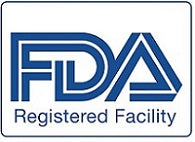
Vacu-Aide® Quiet Suction Unit
Vacu-Aide® QSU Suction Unit
For more than half a century, DeVilbiss Healthcare has provided unmatched safety and performance in the airway suction device category. With the Vacu-Aide QSU, DeVilbiss brings you the same reliable, portable operation in a significantly quieter unit.
With more than 50% reduction in sound, the Vacu-Aide QSU is the quietest high flow/high suction portable unit on the market, making it a smart choice for patients from neonate to adult.
Features
- Vacuum adjustment allows for 50–550 mm Hg and a free flow of 27 liters/minute
- Meets American Association for Respiratory Care (AARC) guidelines for neonatal, infant, child and adult homecare suctioning
- Sealed lead acid battery for use up to one-hour operation
- Can return a patient to a state of comfort quickly – Meets ISO 10079-1:2009 high vacuum, high flow classification
- New, innovative container assembly features integrated bacteria filter
- Container and filter design maintains appropriate flow rate to meet ISO guidelines
- Comes complete with internal battery, carrying case, 6' tubing, AC/DC adapters and power cord
- New Integrated gauge and flow regulator – Easy-to-turn knob conveniently placed around gauge for easy use and control
- Manufactured and tested to ISO10079-1:1999 Standard for Suction Equipment, achieving outstanding performance in the following tests:
- Electromagnetic Compatibility Test – Vacu-Aide does not interfere with or is not susceptible to interference from other equipment such as ventilators
- Drop Test and Shock Vibration Test – Vacu-Aide is far less likely to be damaged when dropped or shipped
- Excessive Temperature Test – Vacu-Aide effectively works in a wide range of environmental temperatures
What Is Included
- Suction Unit
- 800 cc disposable bottle
- Tubing
- 6' tubing
- AC and DC power cords
Vacu-Aide QSU Suction Unit Instruction Guide
Vacu-Aide QSU Suction Unit Consumer Brochure
AARC Guidelines for appropriate subatmospheric pressures:
Neonates: 60 - 80 mm Hg
Infants: 80 - 100 mm Hg
Children: 100 - 120 mm Hg
Adults: 100 - 150 mm Hg
Negative pressures should not exceed 150 mmHg as higher pressures have been shown to cause trauma, hypoxemia and atelectasis.
Source: American Association for Respiratory Care. Nasotracheal suctioning 2004 revision & update. Respir Care 2004 Sep;49(9): 1080-4 (62 references)


